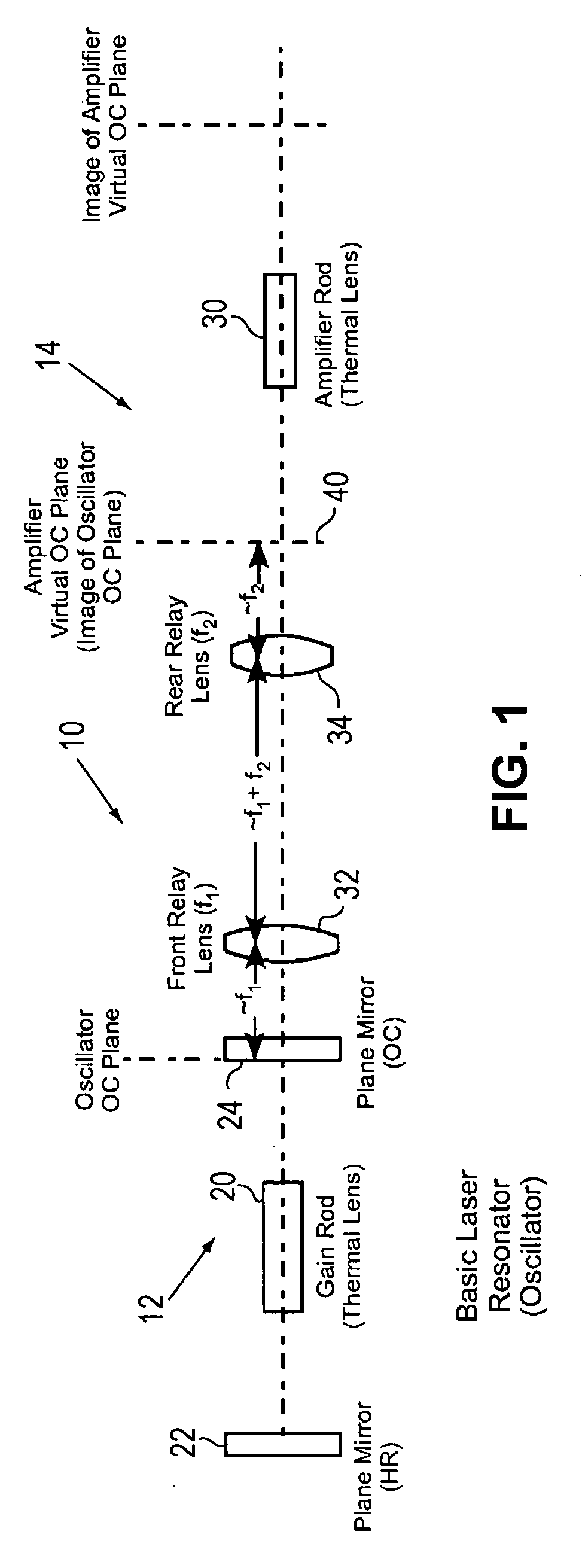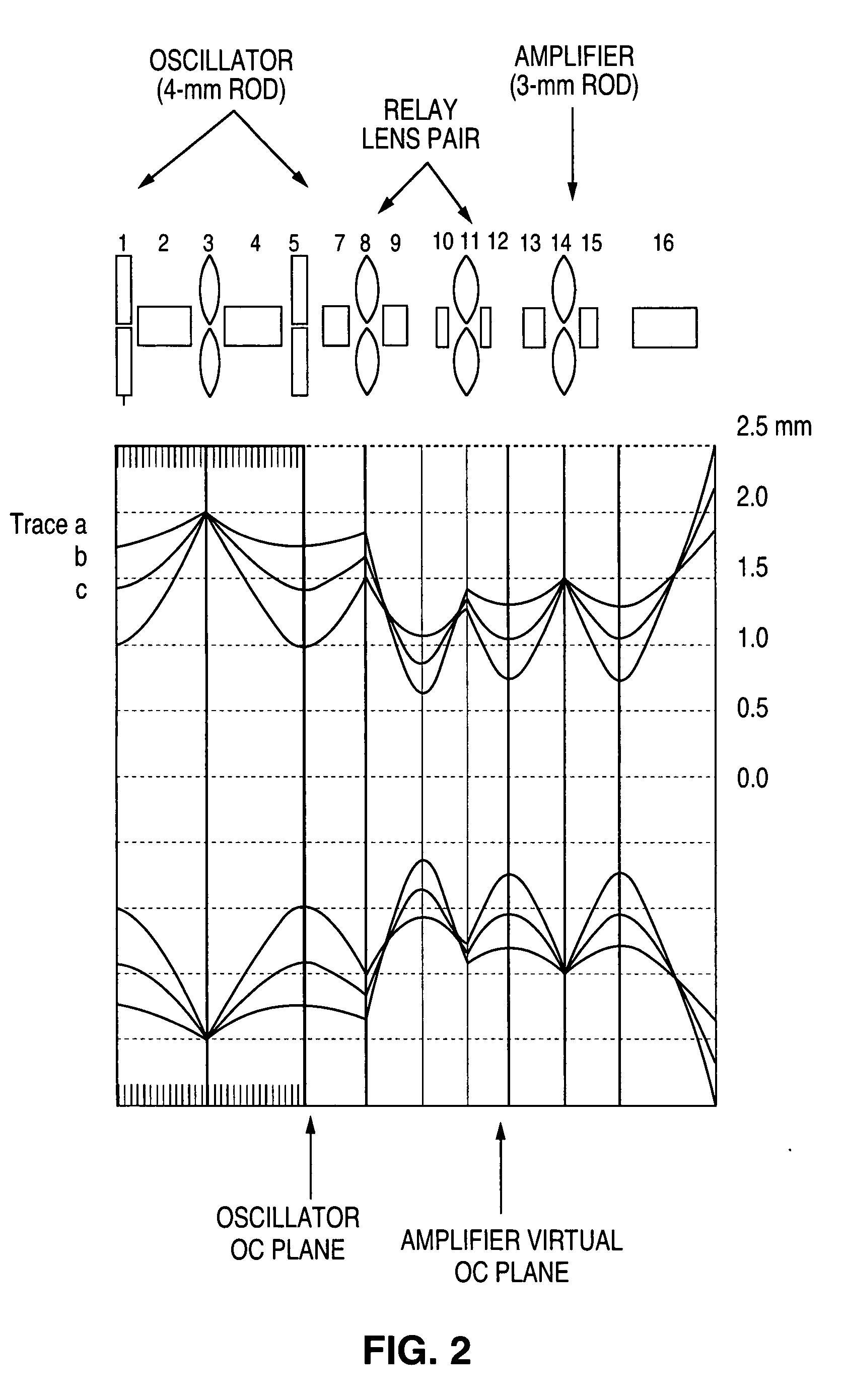Multimode MOPA with thermal lens compensation
- Summary
- Abstract
- Description
- Claims
- Application Information
AI Technical Summary
Benefits of technology
Problems solved by technology
Method used
Image
Examples
Embodiment Construction
[0027]FIG. 1 illustrates a MOPA 10 formed in accordance with the subject invention. MOPA 10 includes an oscillator 12. Oscillator 12 consists of a laser gain module (rod) 20 positioned between a high reflector 22 and an output coupler 24 from which the laser beam is emitted. In this embodiment, both reflector 22 and output coupler 24 are flat and preferably placed an equal distance away from the ends of the rod 20.
[0028]The laser rod 22, could for example, be formed from Nd:YAG. The rod can be side pumped by several diode bars (not shown). As is well known in the art, a water manifold can be provided for cooling the laser rod and diode bars to stabilize operation. The term “rod” is used in the subject specification and claims to define an elongated solid gain element. Laser rods are often cylindrical with a circular cross section but can also have other shapes such an elliptical or a rectangular with either a rectangular or square cross section.
[0029]It is known that ...
PUM
 Login to view more
Login to view more Abstract
Description
Claims
Application Information
 Login to view more
Login to view more - R&D Engineer
- R&D Manager
- IP Professional
- Industry Leading Data Capabilities
- Powerful AI technology
- Patent DNA Extraction
Browse by: Latest US Patents, China's latest patents, Technical Efficacy Thesaurus, Application Domain, Technology Topic.
© 2024 PatSnap. All rights reserved.Legal|Privacy policy|Modern Slavery Act Transparency Statement|Sitemap



